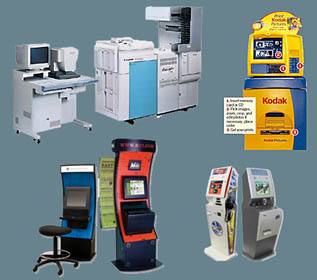

|
| Home • Reviews • Forums • News 2015 • 2013 • 2012 • 2009 • 2008 • 2007 • 2006 • 2005 • 2004 RSS Feeds • FOV Factor Table • Sensor Sizes | Definitions: A-D • E-H • I-L • M-P • Q-U • V-Z | Sitemap Articles • Archived Websites (Pre-DigitalDingus): D100 Lounge • E-10 Club | Contact |
| The $20 Billion Question |
| August 27, 2005 |
| $20 Billion Question (page 1) | $20 Billion Question (page 2)
|
You may not have noticed this trend over the last few years, but printing your images at the local Wal-Mart, CostCo, or other major retail chain store, is becoming very popular. So popular in fact, that on September 8, 2005, the PMA (Photo Marketing Association) will anchor informative insights at the Digital and Wireless Imaging Summit. The discussion will cover the $20 billion imaging market, which is still continuing to expand. A Brief History Of Image Processing I remember back in February of 2001, when I purchased my first digital camera. The Olympus E-10. At the time, it was a revolutionary digital masterpiece and as close to an actual DSLR as one could get, without spending around $3000 (the Canon D30 for example). The common theme of new digital camera owners was printing your own images at your own leisure, on your own printer. For many soon-to-be digital owners and lurkers who cruised the photography forums, the possibilities were endless when it came to digital processing. No more waiting for the local printing labs to screw up your images from your 35mm negatives. Now, you could process them yourself with an image editor, and print them in your own home. And so the lines for cameras such as the E-10, were beginning to grow. As an aside, I personally had to wait two months before I received my Olympus E-10. Previously, I owned a complete Olympus IS-3 DLX system. And of course this paid for the E-10 purchase. There was just no way to do it otherwise. The 4MP Olympus E-10, in late 2000 and early 2001 had a pricetag of around $1900. Some were paying $2100 or more just to get ahead of the rest of the E-10 orders. By 2001, we had approximately 83% of those who wanted digital prints, processing their own images and printing them at home. This was pretty much the norm. By now, discussions on how the film industry was going to survive, and how 1-hr processing labs were going to remain in business or fail miserably, took the lead in heated debates. Image quality debates on film versus digital were also very prevalent at the time. Even though there were 84 out of 100 photographers printing at home, About 7 out of 100 photographers, had their images printed online. This was a fairly new idea, and turn-around times were very important. Some online printing businesses didn't survive. In the same year, we also had 10 out of 100 photographers still using the retail method for their printing. The Current Image Processing Trend Only 3 years later, we have an interesting change in printing trends. A little over 50% of the printing is still done at home, but about 40% is now done in the retail printing sector. This is a dramatic change from the days when photographers wanted to do the job themselves. So, why such a shift? Why are photographers changing their printing preferences?
Sources:
1) Photo Industry 2005: Review & Forecast (499KB PDF)
|
| Home • Reviews • Forums • News 2015 • 2013 • 2012 • 2009 • 2008 • 2007 • 2006 • 2005 • 2004 RSS Feeds • FOV Factor Table • Sensor Sizes | Definitions: A-D • E-H • I-L • M-P • Q-U • V-Z | Sitemap Articles • Archived Websites (Pre-DigitalDingus): D100 Lounge • E-10 Club | Contact |